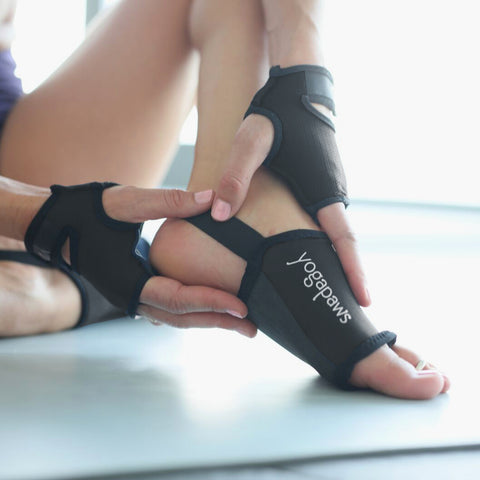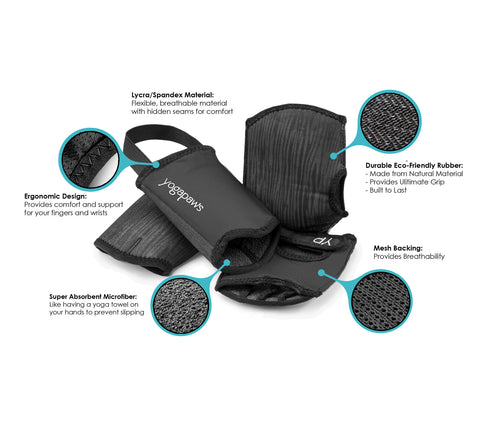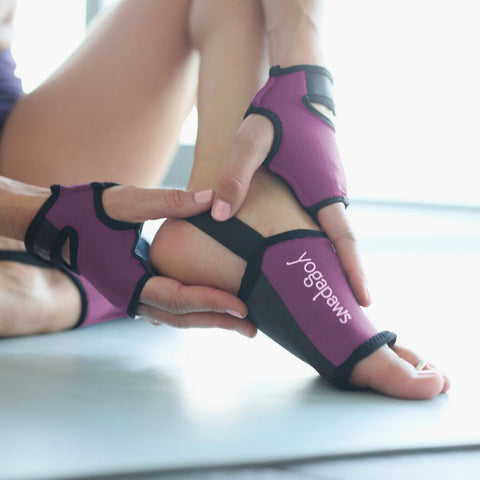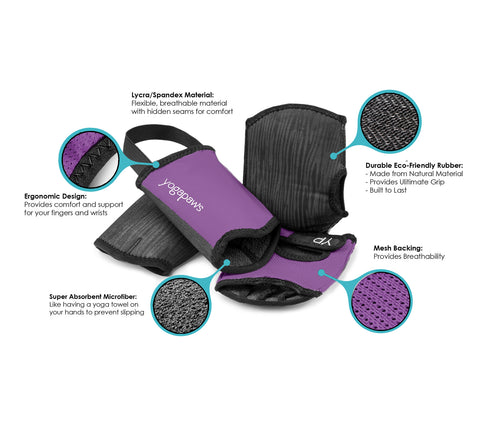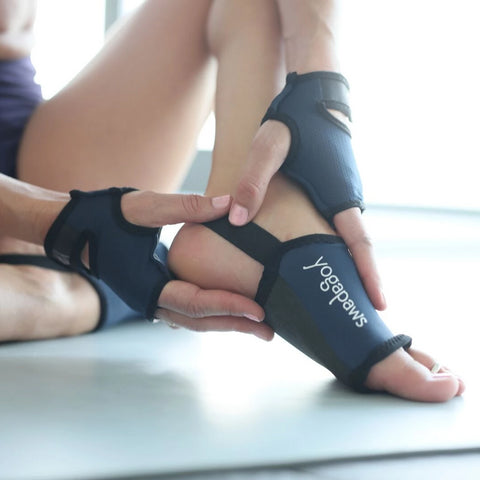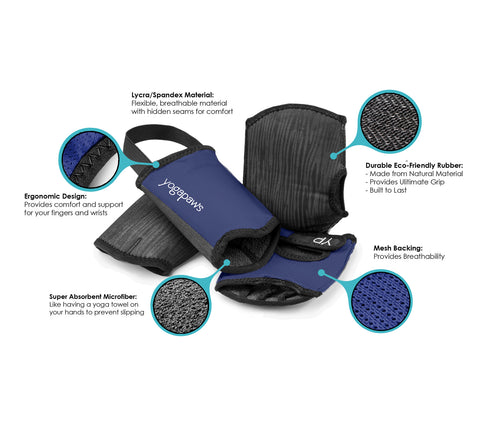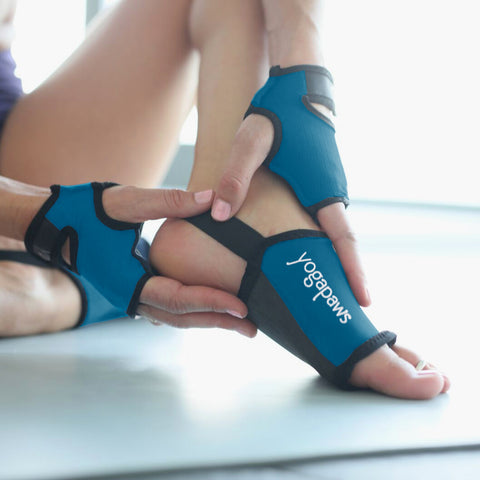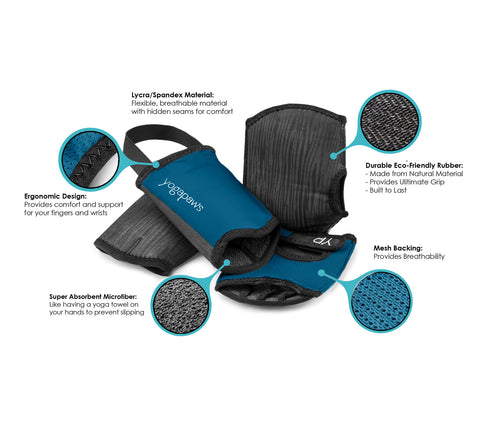Posted on April 14 2018
 Arm balances are among the poses that challenge your mind as much as your body. You have to have strength and alignment throughout your body to make these poses work. They're also a place where it’s easy to let your fear take over if you don’t come to yoga with a facility for balancing on your hands. Even though it’s given in many yoga classes, Bakasana (Crane or Crow Pose) can still feel unattainable.
Arm balances are among the poses that challenge your mind as much as your body. You have to have strength and alignment throughout your body to make these poses work. They're also a place where it’s easy to let your fear take over if you don’t come to yoga with a facility for balancing on your hands. Even though it’s given in many yoga classes, Bakasana (Crane or Crow Pose) can still feel unattainable.
Of course, like so many things in yoga, you can gain the flexibility and strength required for arm balances. If you have a regular practice, especially in a vigorous style like Ashtanga or Vinyasa, you probably already have the raw physical abilities needed to balance in Bakasana. What can be much more challenging is trying to find the balance point where your body weight needs to be to find your balance. This pose has a way of triggering nervousness if you tend to worry about falling.
It’s a great example of just how important it is to train your mind as well as your body. When you are working up to any challenge pose in yoga, you need to be able to visualize yourself completing it successfully, and approach it with confidence, before you can make that a reality. Otherwise, you will often struggle to make the pose work for you.
On a purely physical level, poses like Bakasana can empower you to move out of your comfort zone and redefine what you are capable of (in this case, standing on your hands). Looking at it in a more metaphysical context, it gives you the chance to fly over your own doubts and fears toward what is ahead.
When you are preparing for the pose, it can help to admit to yourself that it does feel like a leap into the unknown as you will be putting your body into a new place. Give yourself a moment to appreciate that that feeling can be exciting as well as scary. Think back to the last time you did something that was really important to you. You probably felt slightly anxious when you first attempted it. But, the reward made the initial hesitation more than worth it. This pose can help you recall that blush of excitement.
Here are some poses and tips to help you:

|
Ananda Balasana (Happy Baby Pose) Benefits: This pose helps open your hips in preparation for Bakasana. How to do it: Lie on your back. Exhale and bring your knees in toward your chest. Inhale and clasp your hands around the outsides of your feet. Let your knees open slightly wider than hip width and press them gently toward your armpits. Press up with your feet and down with your hands to carefully open your hips. Hold for 30 seconds to one minute, then release. |
 |
Malasana (Garland Pose) Benefits: Yoga teacher Kathryn Budig recommends this to help you get the correct alignment for the pose without the balance aspect. How to do it: Squat down. The insides of your feet should be touching. With your weight on the balls of your feet (your heels may or may not touch the floor), let your knees open wide enough to lower your torso between them and touch the floor. Bring your hands forward on your mat and round your spine. Hold for eight breaths, then release. |
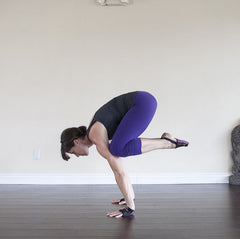
|
Bakasana (Crane Variation) Benefits: This version of the full pose helps you find the right physical actions. How to do it: Start by placing a block on your mat. Put both feet on the block, inner sides of your feet touching. Place your palms flat on the mat in front of your feet. Come into a squat with your knees just wider than your torso. Snug your body between your knees. Make sure your hands are shoulder width apart. Contract your abdominals. Try lifting one or both feet off the block. After 30 seconds, step off the block and release. |
 Let go of the fear. As Budig says, the ground isn’t that far away. You are more stable than you think, but even if you do fall, you’ll be fine. Imagine you are a bird on an air current—the air itself is helping hold you up.
Let go of the fear. As Budig says, the ground isn’t that far away. You are more stable than you think, but even if you do fall, you’ll be fine. Imagine you are a bird on an air current—the air itself is helping hold you up.
Keep trying. Practice really does (help) make perfect. Finding your alignment in this pose comes from trial and error. Each time you do it, try to figure out which way you are falling and correct it.
Remember, when you are learning any new pose, that there is a learning curve. You may not feel like you are getting anywhere, but you are. Every time you work on Bakasana, your body is learning one part of what it needs to know to fly.

